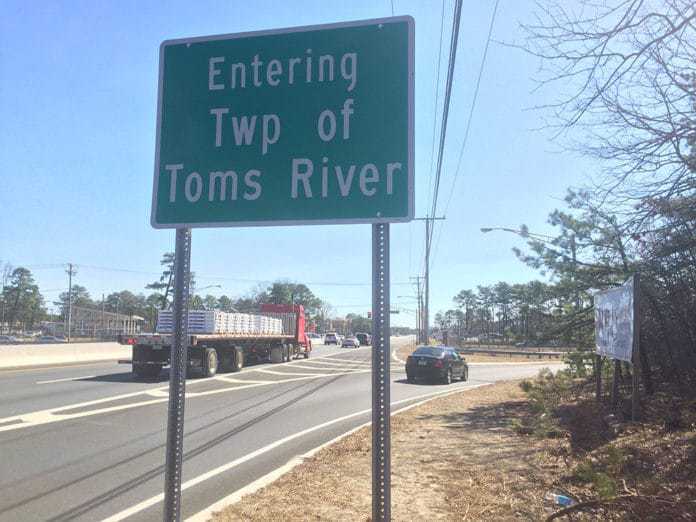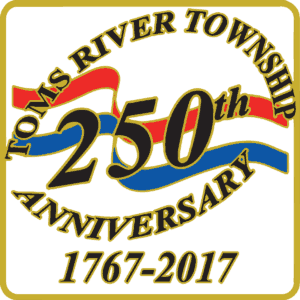
TOMS RIVER – As we count down the days to our town’s 250th anniversary on June 24th, here is a timeline of our state and local history:
The 1600s
1664 – The English lay claim to New Jersey after the Dutch were ousted from control. Charles II, the King of England, granted a large tract of land to his brother, the Duke of York, that encompassed much of North America. Later, in 1664, the Duke turned over to Lord John Berkeley and Sir George Carteret the portion of this land that encompassed all of New Jersey.
New Jersey was divided into two “provinces” as a result of the separate grants to Berkeley and Carteret: “East Jersey” and “West Jersey.”
New Jersey would remain divided until 1702.
1682 – When Robert Barclay was appointed Governor of East Jersey in 1682, to prepare him for his new role, the “proprietors” – the landowners of the Province – presented him with a volume of transcriptions of patents, legal documents, and maps. One of these documents was entitled “An Account of Settled Townes and most of the Plantations or Tracts of Land taken up in the Province of East Jersey.”
There were seven original towns listed in this account: Shrewsbery Towne, Middleton, Piscataway, Woodbridge, Elizabeth Towne, Newark, and Bergen.
1685 – (circa) Thomas Luker, an Englishman, settled in this area and married the local Indian Chieftain’s daughter. He lived along the river tributary behind what is now the downtown Toms River Post Office.
1712 – The first reference to “Tom’s River” is noted in an area map prepared by the English settlers.
1767 – On June 24, 1767, the Town of Dover was established by an Assembly Act – created out of the southern portion of Shrewsbury.
1798 – By the Township Act of 1798, all towns then in existence in New Jersey were “incorporated.” This state law set uniform standards on the format of local governments – and it allowed town meetings to manage towns for one year at a time.
1799 – At the annual town meeting held in March, a resolution was passed to change Dover’s name to “Washington” in honor of our first President. The idea never took hold and George Washington would die several months later.
The 1800s
1852 – There were two efforts to change our name. One was to change the downtown village name to “Huddyville” – in honor of Joshua Huddy, the Revolutionary War patriot who commanded the Toms River Block House.
The second effort was to change our name to “Dayton,” in honor of William Dayton, a prominent lawyer from Freehold who would later run (and lose) for vice president in 1856.
Both of these efforts failed.
1875 – The New Jersey legislature adopted the “Borough Law” which facilitated the creation of borough governments in the state. Between 1875 and 1917, nearly 190 new boroughs were incorporated in New Jersey.
In Ocean County, today, 19 of the 33 municipalities are boroughs – with Surf City being the first, in 1884, and South Toms River the last, in 1927.
The 1900s
In 1913, the Borough of Seaside Heights had been created; in 1917 the Borough of Beachwood was created. In 1914, our town’s voters were asked whether the village part of Dover Township should be separated from the rest of the Township to create a Borough of Toms River. This was not a name change referendum. It was an idea to carve out the downtown village and form a new municipality.
If it had passed, there would have been two municipalities, the Township of Dover and the Borough of Toms River, and Ocean County, today, would have 34, not 33 municipalities.
This effort failed in 1914 in a vote of 130 to 78.
1987 – A voter referendum to change the name of Dover Township was submitted to the voters. This was the first time that this specific question had ever been voted upon. It was based on Public Law 1981, Chapter 169, Section 1. This effort failed in a vote of 9,196 to 7,959.
The 21st Century
2006 – Another voter referendum was held to change the name of the municipality from the “Township of Dover” to the “Township of Toms River.”
On November 6, 2006, the question passed with 15,204 voters voting yes and 9,826 voters voting no – a 61 to 39 percent margin.
Our town’s name became official on November 14, 2006 when the Township Clerk entered the results of the election into the Township’s Minutes. With a flick of the pen, history was made.
A History And Civics Lesson For All Of Us
Come celebrate our history on Saturday, June 24, 2017 – our 250th anniversary – our Semiquincentennial at 11 a.m., our first park – Huddy Park – shall be re-dedicated.
The park land was purchased after a voter referendum approved of it in 1905. Through the 20th and 21st centuries, it has been the location of countless community events.
It recently underwent a much needed “facelift” with new bulkheading, landscaping, and historic fabric. The park is located at the corner of Water and Main streets.
The park shall be officially re-opened and there we shall celebrate our founding as a town 250 years ago.
At noon, our local fire departments and our police department shall hold a food truck festival on Washington Street in front of Town Hall.
It shall be a history and civics lesson for all of us – for the place we call home.
There’s no place like home.
There’s no place like home.
There’s no place like home – Toms River.
Sources: Pane, Local Government Law;
Miller, Ocean County: Four Centuries in the Making;
Zinkin, Place Names of Ocean County, New Jersey;
Ocean County Department of Planning – Historical Population Trends 1930-2000;
Klett, “An Account of East Jersey’s Seven Settled Towns, circa 1684”
Snyder, The Story of New Jersey’s Civil Boundaries: 1606-1968








